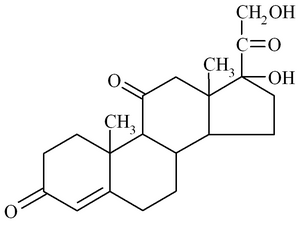Q I've had white bumps on the skin around my eyes for months. What are they, and how can I get rid of them?
A Those bumps are most likely milia, says Audrey Kunin, M.D., a Kansas City, Mo.-based dermatologist and the author of The DERMAdoctor Skinstruction Manual (Simon & Schuster, 2005). "Milia are essentially whiteheads that have closed over themselves," Kunin explains. "While a normal whitehead would rupture and go away, milia have developed a thin cover of skin cells that causes them to harden and turn into cysts." The cyst then pushes up under, but not through, the surface of the skin, causing stubborn bumps that won't go away.
Using products that are too rich for your skin is one of the most common causes of milia, especially around the eyes. "The skin around your eyes is thinner than the skin on the rest of your face, so it is much easier to smother it," Kunin says. Creamy eye shadows, heavy eye creams and oily makeup removers can be culprits, so stick with powder shadows and look for products labeled oil-free and noncomedogenic (meaning they don't clog pores). Editor's picks: Neutrogena Oil-Free Eye Makeup Remover with aloe and cucumber extracts ($6; at drugstores), Aveda Pure Comfort Eye Makeup Remover with chamomile and cucumber ($15; aveda.com), Clinique Moisture Surge Eye Gel with green-tea and aloe extracts ($26; clinique.com), Clarins Eye Contour Gel with the antioxidant apricot and moisturizing shea butter ($41.50; clarins.com) and Zia Natural Skincare Essential Eye Gel with hyaluronic acid and witch hazel extract ($20; zianatural.com).
It's easier to prevent new milia from forming than to clear up existing bumps. Though switching to lighter products may cause the milia to eventually disappear on their own, more often they must be punctured in order to remove the debris that's accumulated inside, Kunin says. This is a delicate procedure in the sensitive eye area, she warns, and should only be done by a dermatologist; never attempt it yourself, as scarring can result.
RELATED ARTICLE: Baffled by bumps?
Here are some other eruptions that can appear on your face and body:
Blackheads occur when pores, the minute openings in the skin's surface, become occluded with a combination of dirt, oil and dead skin cells. Blackheads are noninflammatory (meaning they don't have the infection and redness that accompanies a pimple) and are usually concentrated in the oily T-zone area, especially on and around the nose. Regular use of an exfoliant, either physical (e.g., a scrub) or chemical (e.g., a face wash with salicylic or glycolic acid) can help to get rid of a moderate blackhead problem. A dermatologist-prescribed topical retinoid can also help treat more persistent problems.
Ingrown hairs are those that have curled over and re-penetrated the skin, causing the area to become inflamed and sometimes painful. Ingrowns most commonly occur in areas where the hair is removed frequently, such as the legs, and are especially persistent in the bikini area, where hair is coarser and curlier. Regular exfoliation can help prevent ingrowns, as can the use of an exfoliating solution like Tend Skin ($20; sephora.com).
Pustules are ordinary pimples and occur where the body has high concentrations of oil glands, such as the face, chest and back. They result when oil, dead skin cells and bacteria trapped in the hair follicle cause it to swell and eventually burst. When one bursts, the infection spreads into the surrounding tissue, causing the redness and swelling that are the hallmarks of a pimple. Over-the-counter creams with salicylic acid and benzoyl peroxide can help clear up pustules. Your dermatologist can treat severe and painful pustules with a cortisone injection, which helps speed up the healing process.
Send your questions to Shape, Beauty Q & A, One Park Ave., 10th Floor, New York, NY 10016; fax to (212) 725-9228; e-mail to BeautyQ&A@Shape.com.
COPYRIGHT 2005 Weider Publications
COPYRIGHT 2005 Gale Group



